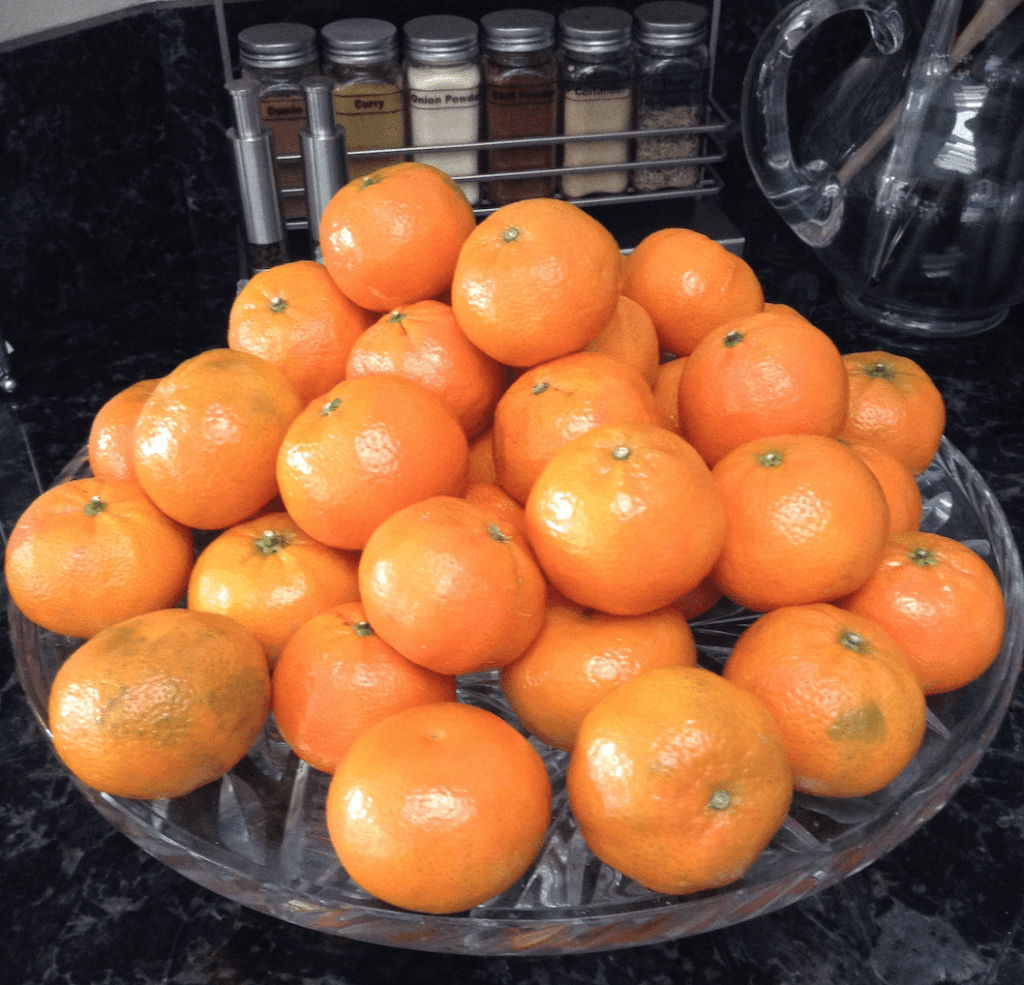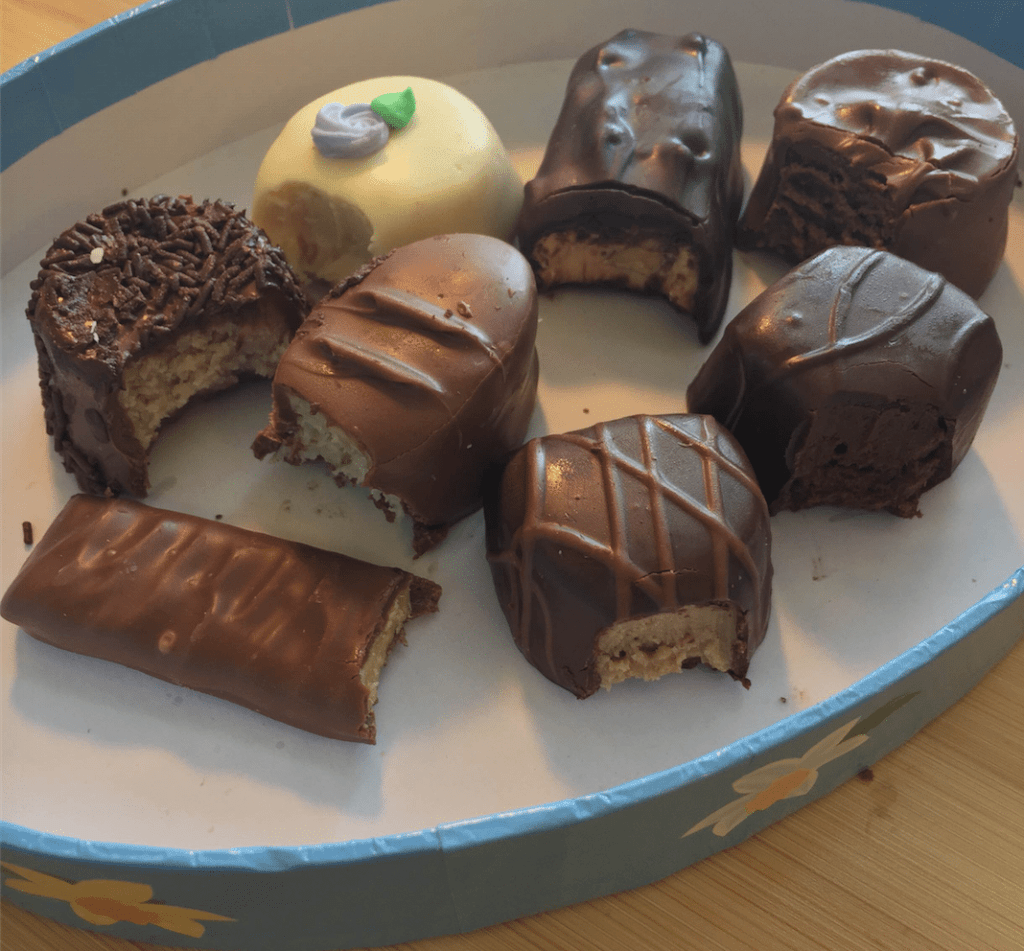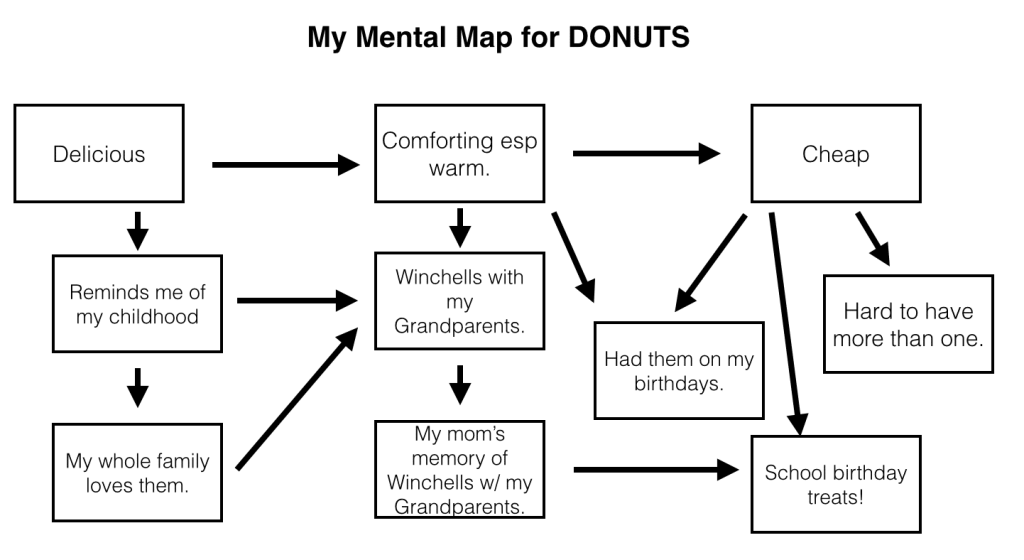Do you know why you eat?
We eat because we are hungry. We eat for energy. You might know some of the reasons we crave certain foods, but most of our food decisions come from hidden forces.
In fact, Food Psychologist Dr. Brian Wansink has found that we make more than 200 food decisions each day but we are unaware of 90% of them. Here at Science of People, I like to explore the hidden forces that drive our behavior and in this post I want to talk about the science and psychology of eating.
Mindless Eating: Why We Eat More Than We Think by Brian Wansink, Ph.D. was our May Book Club book and his research was fascinating. I am going to sum up the best parts for you in this article.
I want to convince you of this big idea:
The best diet is the one you don’t know you’re on.
If you understand the science of eating, you can reengineer the way you think about food and the way you diet–in other words, you shouldn’t be on a diet at all.
Questions We Will Answer:
• Does food with a brand name really taste better?
• Do you hate brussels sprouts because your mother did?
• Does the size of your plate determine how hungry you feel?
• How much would you eat if your soup bowl secretly refilled itself?
• What does your favorite comfort food really say about you?
• Why do you overeat so much at healthy restaurants?
Ok, onto the science of food.
Food = Pleasure
Food is a great pleasure in our life – not something we should compromise. We simply need to shift our surroundings to work with our lifestyle instead of against it
Brian Wansink
Don’t ever let anyone tell you that food is the enemy. Food is and should be a pleasure. One of the scientific food principles that intrigued me most was the idea that we shouldn’t restrict our eating.
Every diet ever tells you to cut out or eliminate certain foods. The diet tips we hear all the time:
- No carbs.
- Eliminate anything white.
- No fat.
- Gluten-free.
- No animal meat.
- Cut out dairy.
Here’s the problem: The moment we consciously deny ourselves something, the more we’re likely to end up craving it more and more.
For example, I’m not a big meat eater. I happened to read the book Skinny Bitch a few years ago which is a pro-vegan book. I am not kidding you, within 10 pages of learning that I should cut out animal products of all kinds I had the biggest craving for BBQ ribs. Before that moment, I had never in my life craved BBQ ribs until I was told I couldn’t have them. This is incredibly common. Most people will tell you that they have something that they don’t eat as a matter of principle (leaving aside food allergies of course). This sets you up for craving that exact food. Before we move onto the other science of eating tips:
Food Hack: Get rid of your eating rules. Let’s use the science of eating as a lifestyle not a rule book. Read on.
Food for Thought
One of my favorite food science studies has to do with wine–also one of my favorite foods! In this study, researchers wanted to know if what you think about food effects how you eat. Researchers got $2 wine and put two different labels on them. One said the wine was from North Dakota and the other said the wine was from California. North Dakota is not exactly known for its vineyards, whereas California wine is known to be superb around the world. Researchers wanted to know if this thought expectation changed people’s expectation of the taste. Sure enough, people who got the California wine said the wine tasted better AND the entire meal tasted better. People who got the North Dakota bottle rated the wine and the meal lower. This tells us that the power of thought is incredibly powerful. This is called:
Expectation Assimilation: The notion that our taste perceptions are biased by our imagination, and if you expect a food to taste good it will. And if you expect a food to taste unpleasant it will.
In one crazy study, researchers made participants eat chocolate yogurt in a dark room. They told the participants the yogurt was strawberry flavored even though they were all eating chocolate. 59% of participants rated the yogurt as having a “nice strawberry flavor”! They expected strawberry and they tasted strawberry.
Food Hack: Set high food expectations. Sure, you are eating broccoli, but take a moment before you eat it to remind yourself that you are eating crunchy, fresh broccoli. Did you make a smoothie from scratch? Then set the expectation of eating a delicious homemade, hand-crafted smoothie.
Your Eyes Eat First
This builds upon #2 with a slight twist. How your food is presented is just as important as how it tastes. In other words, presentation is everything. In one study, researchers gave brownies to 3 groups of participants. The brownies were exactly the same but presented in different ways:
- Group #1 got the brownie on a nice china dish.
- Group #2 got the brownie on a paper plate.
- Group #3 got the brownie on a napkin.
The researchers then asked participants how much they would pay for each brownie.
- Group #1 who got the brownie on a nice china dish would have paid $1.27.
- Group #2 who got the brownie on a paper plate would have paid 76 cents.
- Group #3 who got the brownie on a napkin would have paid 53 cents.
Take the time to make your food look awesome. This is great for you and your dinner parties. I wasn’t sure how powerful this principle would be until I did it myself. I went to Goodwill and got some beautiful serving platters and vases. I then switched my fruit (normally on the counter or in a plain wooden bowl) into a nice display:

I’ll be darned if that fruit doesn’t disappear much quicker! Instead of ignoring the fruit completely, my husband and I have been gobbling them up. We also have people over all the time and I have noticed they are much more likely to grab a tangerine from my glass platter than when it was in the mesh bag it came in sitting on my counter!
Food Hack: Go make all of your healthy food look amazing. Bring out your nice platters, arrange the pears into a flower shape, put your colorful veggies on display as soon as you open the fridge.
Food Hack: This works really well with names for kids. In one study with campers, Dr. Wansink relabeled V8 juice as “rainforest smoothie” and it was a hit. Making peas, rice and chicken for your kids tonight? No you’re not! You’re making Power Peas, Tangy Chicken and Wild Wacky Rice!
The Mindless Margin
Wansink explains something called “The mindless margin” which is a span of about 200 calories that can make the difference between gaining 10 pounds in a year (by eating 100 calories more a day) or losing 10 pounds in a year (by eating 100 calories less a day). The reason he calls it mindless is because your brain and body won’t even notice that the 100 calories are missing. In fact, he says 20% is the magic number. Our brains and stomach don’t notice if things are 20% smaller or 20% different–30% is too much and 10% doesn’t cut enough for you to see a difference in weight.
Out of Sight, Out of Stomach
Wansink found that when secretaries sit near clear dishes filled with Hershey’s Kisses, they ate 71 percent more — or 77 calories a day — than those sitting near opaque dishes of Kisses. Over the course of a year this adds up to more than five pounds of extra weight. We eat what we see because if we walk by the kitchen without a craving but see a rolled up bag of chips, our brain triggers the salty, crunchy goodness and creates a craving.
Food Hack: Put all of the unhealthy food in your fridge, in the drawers or bottom shelves.
Food Hack: Take everything unhealthy and remove it from counters. In fact, hide it…make it really hard to get to. Read on to find out why:
Positive Difficulty
One idea Wansink shares quite convincingly is the idea that convenience leads to consumption and distractions really can slow us down.
A few seconds can change how you eat. The closer bad food is, the more you eat it. The closer good food is, the more you eat it. Case in point:
Some terrible person (my mother) sent me Easter candy. It was on my kitchen counter for not even 24 hours and before I realized it, this happened:

Every time I walked into the kitchen I took a tiny bite of each. You know, just to try them. They were far too easy to grab, and so I grabbed them. Wansink recommends making all of your not-so-healthy snacks really hard to get to and all of your healthy snacks really easy to get to. For me, this has helped A LOT:
- Pre peel and cut apples and have them sitting at the top of my fridge.
- Got rid of all non-assembly required snacks. If I want to snack, I have to go to the store and get it.
- The few easy to eat, but not so healthy snacks we have go in the very top shelf of the kitchen–husband or step ladder required. Far too much work. They are all stale now!
Food Vision
Use your brain and vision to help you curb your eating. Wansink found a few interesting psychological behaviors around eating:
- When we put all of our food on one plate–in other words see it all at once instead of going back for small plates, we eat less.
- When we see how much we have eaten, we stop eating. Don’t throw away those rib bones as you eat them, don’t toss the wrappers of your candy as you chow down the bag. Instead, stack them into a little pile.
We are pretty bad at knowing how much we have eaten and how much we want to eat, so keeping the visual evidence and setting ourselves up to see exactly what we have consumed sets us up for natural stoppers.
Smaller = Thinner
You have probably heard this one before, but it is worth reminding you:
- EVERYONE eats more if given a larger portion. Wansink gave free popcorn to movie-goers in either Medium or large-tubs. Those with the big popcorn buckets ate 53% more–even though eaters said size wouldn’t effect their snacking.
- Interesting fact: People of normal weight tend to think they ate 20% less than they did, while those who are obese tend to underestimate by 30 to 40%.
- Smaller cups, plates and bowls makes a huge difference. This helps you feel like you are eating more.
Power of 3
This post and the book are filled with tiny changes. Wansink gives an interesting tip to change small habits one day at a time. He recommends trying to implement 3 changes each day and keeping track with a simple chart. Make a chart with a column for each day of the month. Then put 3 small changes on the right side. As you go through the month put a check near each one. It’s ok if you skip some, but every check adds up to 100-200 less calories which adds up to significant poundage at the end of the month. Here’s mine for the first few days of April:

My 3 small changes were:
- Using coconut creamer instead of half and half (a lot less calories) in my daily coffee.
- Eating either a small salad or soup before lunch–this made me eat way less of my starch/protein on the main plate.
- Pre-cutting the crust off my bread with sandwiches or toast. I don’t like crust much anyway and this cut 100 calories off my bread consumption.
This chart was kinda fun to do and helped me see the hundreds of calories adding up!
Challenge: Try picking 3 small things from this post that you can try for the next month!
Your Food Story
One concept Wansink introduced me to was the idea of a food narrative or food story. Our favorite foods all come from an emotional place. He builds mental maps of where cravings come from. I decided to do this for myself with one of my favorite foods: DONUTS. I frickin’ love donuts. I decided to dig deep into what my emotional ties are to the food. Here’s what I came up with:

I loved learning about the hidden forces that drive my eating. I am definitely a more conscious eater and have optimized my kitchen to make eating healthy a bit easier. I hope you have some changes you can implement right now!

This is fabulous, sharing.
Thank you for reading, Bodyn!
Danielle | Science of People Team
Nice tips, thanks!
Thanks for reading, Péter!
Danielle | Science of People Team
All great tips on how to be more aware of what we take in, thank you for sharing!
I believe this concept of putting yourself in environments that you want to change can be applied to any aspect of your life. For example, if you want to exercise more, start getting your gym clothes ready the night before and set alarms on your phone for when you’d like to use the gym. If you want to read more, place the book in an area you visit in your house or lot even if that may be the kitchen. Thanks for the helpful tips Vanessa!
I can really relate to the food story. I have it with sour foods. My mum was always cooking a sour stew for special days, my father loved his salad with a lot of vinegar…
This information might come in handy whenever I have my ice cream cravings or my candy bar cravings. Good stuff!
I love how you ate a bit out of eat chocolate treat! I will be sure to try out this way of thinking and hopefully adopt a healthier attitude towards food!
All these tips are super helpful! I’m personally a terrible eater – I have the worst habits, I don’t eat healthy (it wasn’t until college that I ate vegetables, and even now it’s a struggle to buy and eat them). As a way to be more healthy, I am definitely going to try these out in my apartment. I keep meaning to try things like meal prepping and hiding away the bad and unhealthy foods…but because I hate being in the kitchen so much, I even struggle to motivate myself to prepare healthy things for the week again, and still resort back to breakfast foods and pasta for my main meals. Ironically enough, if I’m cooking for someone else I put all my time and effort into it to make it a (relatively) healthy and balanced meal, but for myself, no such luck hahaha
I feel deeply attached to this port- because I have struggled between foodie and a girl with an eating disorder for the last five years. I have phases of extreme foodie and phases of strict food rules- and it is unhealthy. I have read up so much on nutrition and the science behind it but this post definitely adds to my hope that I can be balanced while having discipline
Thank you for sharing, Drishti. It can be so challenging to avoid one of the extremes. I’m glad this post was helpful for you 🙂
Danielle | SOP Team
Have you ever used the NLP Swish method to help with your Donut fetish?
Ahh All this food talk is making me hungry! However, I really do agree that we eat with our eyes. For that reason I really admire chefs because they can make the simplest meals look so visually tasty. I also do think that having unhealthy food out of sight will leave them out of mind. I know that I love chocolate and sweets, so I try not to buy them at the store or I try to share them when I do buy them so most of them could be gone quickly and I won’t be tempted to overeat.